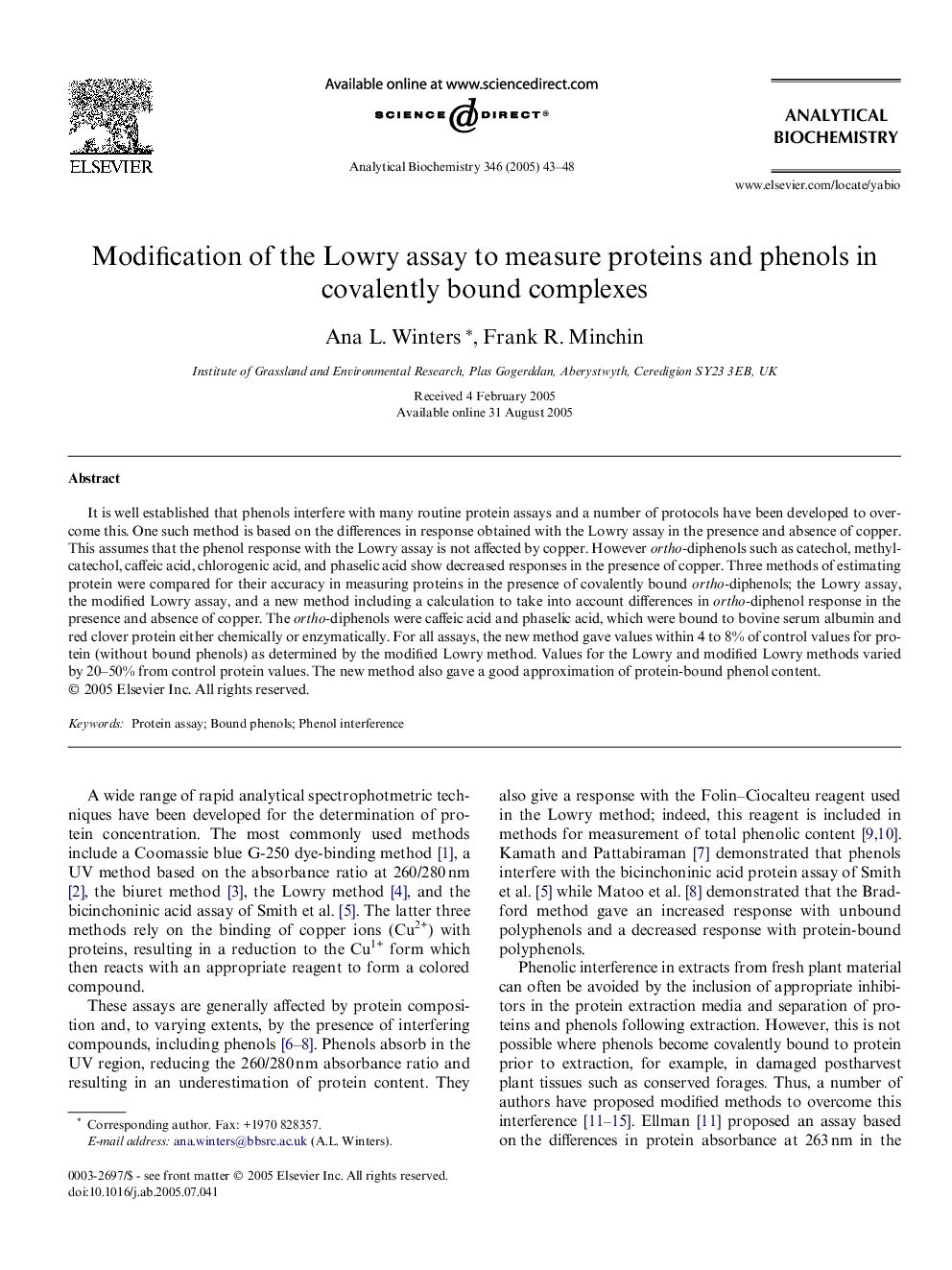| Article ID | Journal | Published Year | Pages | File Type |
|---|---|---|---|---|
| 10536246 | Analytical Biochemistry | 2005 | 6 Pages |
Abstract
It is well established that phenols interfere with many routine protein assays and a number of protocols have been developed to overcome this. One such method is based on the differences in response obtained with the Lowry assay in the presence and absence of copper. This assumes that the phenol response with the Lowry assay is not affected by copper. However ortho-diphenols such as catechol, methylcatechol, caffeic acid, chlorogenic acid, and phaselic acid show decreased responses in the presence of copper. Three methods of estimating protein were compared for their accuracy in measuring proteins in the presence of covalently bound ortho-diphenols; the Lowry assay, the modified Lowry assay, and a new method including a calculation to take into account differences in ortho-diphenol response in the presence and absence of copper. The ortho-diphenols were caffeic acid and phaselic acid, which were bound to bovine serum albumin and red clover protein either chemically or enzymatically. For all assays, the new method gave values within 4 to 8% of control values for protein (without bound phenols) as determined by the modified Lowry method. Values for the Lowry and modified Lowry methods varied by 20-50% from control protein values. The new method also gave a good approximation of protein-bound phenol content.
Keywords
Related Topics
Physical Sciences and Engineering
Chemistry
Analytical Chemistry
Authors
Ana L. Winters, Frank R. Minchin,
